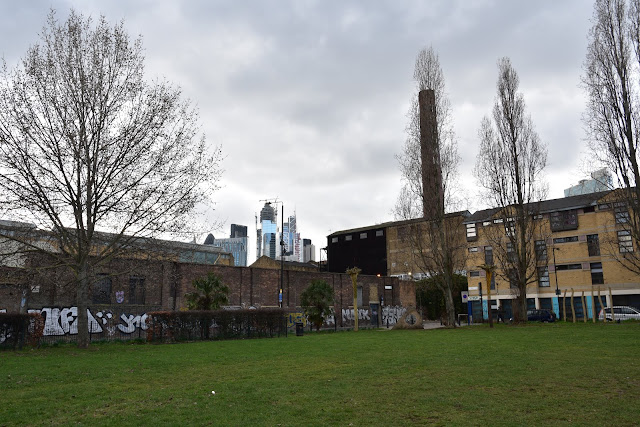Yet again, my London enthusiasm took me to another one of my favourite parts of London, and on the way there, I visited the Barbican Wildlife Garden. Despite its small size and its location off the busy Aldersgate Street, this secluded garden is a paradise for urban wildlife. When I reached the BWG, I was graciously welcomed by Jo, and some of the rest of the team. Jo showed me around the meadows, and told me the history of the garden, from it starting as a residential garden, Fann Street Wildlife Garden, in 2006, to it becoming a haven for wildlife, and birds, such as Goldfinches, Blue Tits, Coal Tits and even Great Spotted Woodpeckers! However, there was one species which really stood out for me: House Sparrows. They have declined by 68% in urban areas since the 1970s, and to me, it was a miracle to see them thriving in the City.
Another member of the team, Nick, showed me the vegetable patches, and explained how the population of Frogs has changed over the years at the BWG, and I was blown away by the nine clumps of frogspawn in the ponds! There was also a wonderful little bird hide, which the BWG had acquired through funds from The Conservation Volunteers in 2016. This is a great place to sit down, and take in the huge contrast of the Barbican Estate which surrounds the BWG: this is where I realised what a peaceful oasis the Garden was, watching Goldfinches and Blue Tits eat from the many feeders hanging from the trees opposite.
When I looked around, I did not see volunteers in a garden, but heroes, taking the time to keep this indispensable open space the paradise that it is, for our wellbeing, and for the future of the City's biodiversity. This made me think: can't all green spaces be nurtured in this way?. We owe a lot to them.
With some of the team at the BWG
Clumps of frogspawn
House Sparrow nestbox
Record shot of a Great Tit
Flowers growing on the edge of the Garden

Even people on the Estate are doing their bit!

Blackbird's nest
I then took a train to Liverpool Street, and after lunch, set off on my journey through Spitalfields. This is a vibrant, atmospheric area on the edge of Tower Hamlets, and home to the famous Brick Lane. It has been shaped and characterised by the Bangladeshi community, leading to one part of the area being known as Banglatown. Many of the street signs in Banglatown even have Bengali scriptures underneath them! After crossing from Hanbury Street onto Spital Street, I walked to my first stop, Allen Gardens. This is a large, open space which may seem to be absent of biodiversity, but if you look carefully in the hedges, surprisingly, there is a population of 20-25 Sparrows and a few Dunnocks! There are great views of the City there too.
Allen Gardens, with the Old Truman Brewery and the City behind it
Crow

Street sign with Bengali scripture
Finally, I visited the Gardens' adjacent site on Buxton Street, Spitalfields City Farm. This was my second visit to a City Farm, the first being Mudchute in January. There weren't many visitors at the time, so it seemed a lot more peaceful then it would be usually. I was surprised at the fact that this tiny farm had made space for a wildlife garden, with House Sparrows, Blue Tits, an insect hotel, bird feeders and even a beehive! In the main section of the farm, there were chickens walking freely everywhere (so many that there were more chickens using the 'pig crossing' than pigs), a few goats and donkeys in the stables, rescued ferrets and some very unusual breeds of guinea pigs.
Near the entrance, I strolled through fields of crops: radishes, garlic, you name it. If you've had a bad day, you can just visit the farm, and be cheered up by the many rare breeds it's home to, and just sit down and listen to birdsong, and watch the world go by.
Domestic duck
Goats in the stable

Chicken

Sheep

Male House Sparrow

Female House Sparrow

Patches of garlic

Bug hotel

Sunset over the farm and central London












This comment has been removed by a blog administrator.
ReplyDelete